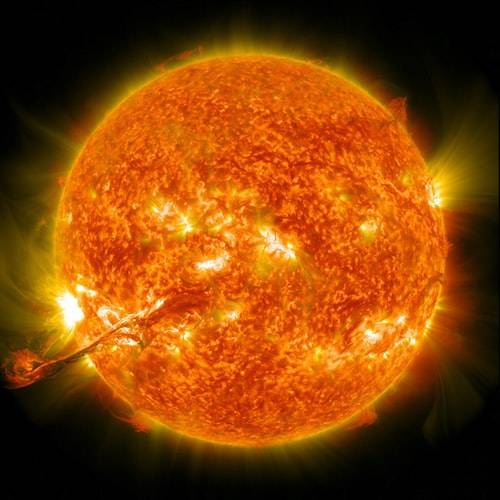SpaceX announced that a geomagnetic storm caused by a massive solar radiation flow destroyed at least 40 out of 49 satellites recently launched by the company as part of its Starlink internet communication network. Jonathan McDowell, an astrophysicist at the Harvard-Smithsonian Center, stated that the incident is believed to represent the largest collective loss of satellites due to a single geomagnetic storm. The company noted in an announcement on its website on Tuesday that the storm struck the satellites on Friday, February 4, a day after their launch into a temporary "low" orbit about 210 kilometers above Earth.
SpaceX explained that it typically deploys satellites in such low orbits initially so that they can quickly and safely fall back to Earth and burn up upon re-entry if a malfunction is detected during initial system checks. However, the company did not clarify whether it had anticipated the severity of the space weather conditions, which were caused by a solar storm days before, when launching its latest batch of 49 satellites. According to SpaceX, the speed and intensity of the solar storm significantly increased atmospheric density at the low satellite orbit, resulting in heightened friction or drag that destroyed at least 40 of them.
The company added that Starlink operators attempted to steer the satellites into a "safe" flying position to minimize drag, but those efforts failed for most of the satellites, leading them to slip into lower atmospheric levels where they burned up upon re-entry. McDowell told Reuters, "This is unprecedented, as far as I know." He mentioned that he believes this is the largest single loss of satellites due to a solar storm and the first collective disruption of satellites as a result of increased atmospheric density.
SpaceX, the Los Angeles-based rocket company founded by billionaire Elon Musk, has launched hundreds of small satellites into orbit since 2019 as part of its Starlink high-speed internet service. Musk tweeted on January 15 that the network has 1,469 active satellites, with 272 transitioning to operational orbits. The company envisions eventually deploying around 30,000 satellites, an increase from the previously planned 12,000.




